| ”@J-PARC News - January 2013 (Issue #94) |
| TThe BL02 Biomolecular Dynamics Spectrometer (DNA) , a new neutron experimental instrument at the Materials and Life Science Experimental Facility (MLF), has been equipped with an independently developed high-performance, high-speed disk chopper and crystal analyzer. Performance verification experiments conducted in October of last year confirmed that energy resolution is a world-class 3.0 micro electron volts, and the noise level has a high performance of about 1/100,000 of the neutron signal level. Since signals are weak due to the atomic level dynamics of biopolymers (protein) and battery materials, this means that it is now possible to observe previously unobservable events, and this will likely lead to advances such as deeper understanding of biological phenomena and development of high-performance battery materials. This beam line is operated jointly by JAEA and CROSS (Comprehensive Research Organization for Science and Society) . |
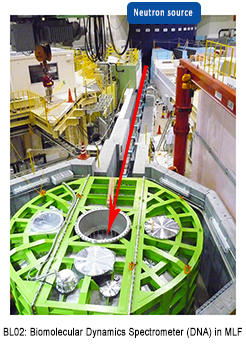 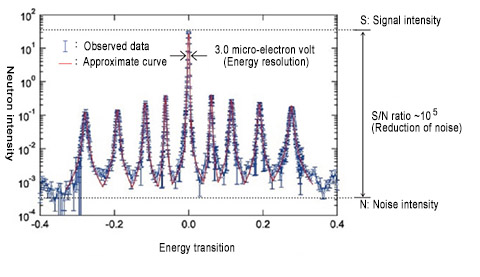 |
 * Click here to enlarge. * Click here to enlarge. * Click here to enlarge. * Click here to enlarge. |
 |
 * Click here to enlarge. * Click here to enlarge. |
|
| 16th Program Advisory Committee (PAC) Meeting for Nuclear and Particle Physics Experiments at J-PARC |
| This meeting was held on January 9-11 at the Ibaraki Quantum Beam Research Center (IQBRC) , and was attended by the 13 members of the PAC, including 7 members from overseas. The PAC reviews the adoption of experiment proposals to be conducted primarily using the main ring accelerator (MR) of J-PARC, for which applications have been submitted for a joint use experiment. It also provides recommendations on key items relating to moving forward with the research plan. Professor Junji Haba of the KEK Institute of Particle and Nuclear Studies is Chair of the committee. The committee reviewed (1) the current operating situation and future outlook for accelerators, (2) the situation of joint use experiments (T2K Neutrino Oscillation Experiment) , and (3) experiments searching for neutron-rich hypernuclei using the K1.8 beam line of the Hadron Hall. There was a preliminary report on the experiment searching for K-pp bound states, which has finished trial data collection, and reports on the current state of R&D for experiments in the preparation stage. There were also proposals for new experiments using the high momentum beam line, and explanations of two experiments being considered for continuation. The PAC provided advice on these reports, reviewed the proposals, and provided recommendations on plans for carrying out experiments. Minutes of the meeting will be released in the near future. |
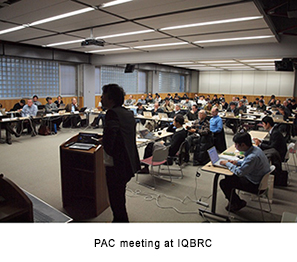 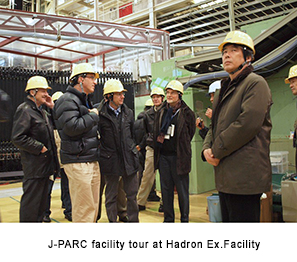 |
 * Click here to enlarge. * Click here to enlarge. * Click here to enlarge. * Click here to enlarge. |
| £to Page Top |
|
| Facility updates |
| Work to provide an evacuation route was completed at the First Experimental Hall of the Materials and Life Science Experimental Facility (MLF) . The Hadron Experimental Facility was operated and utilized until the morning of the 17th, and various types of data were steadily collected due to the stable operation of the accelerator. The data is currently being analyzed. After hadron operation was finished, beam extraction adjustment and operation were carried out at MR, and the T2K experiment resumed on the night of the 17th. |
 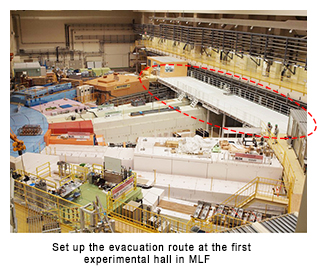 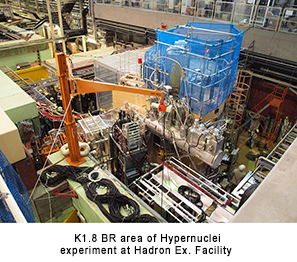 |
 * Click here to enlarge. * Click here to enlarge. * Click here to enlarge. * Click here to enlarge. |
| £to Page Top |
|
| Fabrication of High-current Radio Frequency Quadrupole Linac (RFQ) |
| At this linac, work to increase beam power is planned for August and later in this year, and as part of that, we plan to replace the initial accelerator section comprised of an ion source and RFQ. Fabrication of the equipment currently being used and the high-current RFQ is finished, and various performance tests are being conducted in the Klystron Preparation Room of the Linac Building. |
 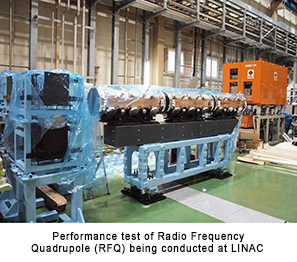 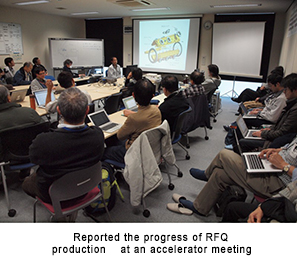 |
 * Click here to enlarge. * Click here to enlarge. * Click here to enlarge. * Click here to enlarge. |
| £to Page Top |
|
| Collaborative Workshop on Optic and Quantum Beam Science (Tohoku University) |
| On January 7-8, a joint workshop was held with 71 participants at the Institute for Materials Research of Tohoku University. With the title "New Developments in Materials and Life Science using Quantum Beams (II) : A collaboration and combination of different fields between Tohoku University and other large facilities," the workshop focused on collaboration with the large experimental facilities of J-PARC (neutron, muon) , JRR3 at JAEA and SPring-8. On the first day, researchers from the large experimental facilities provided an overview of optic and quantum beam facilities, and new methods of using them. From J-PARC, Dr. Kenji Nakajima of the Neutron Science Section (senior scientist, JAEA) and Kenji Kojima of the Muon Section (Associate Professor, Institute of Materials Structure Science, KEK) provided an introduction to neutron and muon experimental equipment, and the outlook for future science using that equipment. Dr Kakurai from JAEA spoke on research using neutrons at the JRR-3. On the second day, talks were given by researchers working on new research using the facilities, and researchers already using them as a research tool. There was an exchange of opinions on the best approach toward collaboration between Tohoku University and large experimental facilities in the future. |
|
| Collaboration Meeting on the T2K Experiment |
| This meeting was held on January 21-26 at the Ibaraki Quantum Beam Research Center, and more than 200 researchers, includng ∼140 from overseas, were participated. They discussed the latest news on analysis of T2K experiment data. The utilization and operation schedule up to this summer was also confirmed, in order to achieve aims such as improving the significance of the phenomenon of electron neutrino appearance. |
| £to Page Top |
|
Copyright 2011 JAEA and KEK Joint Project. All rights reserved.
|
|